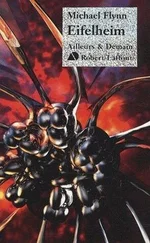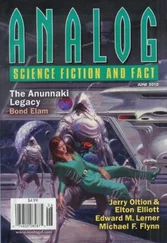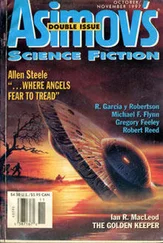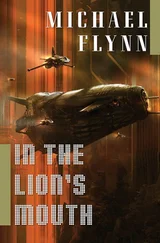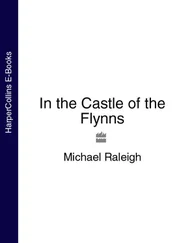Yet a wealth of files, documents, and images dated from the time of the Commonwealth’s fall, material that on the mong was forbidden. There could be but one reason for the oversight.
The Names do not know these files exist! The off-line Archives were visible only to those who came physically to this building, and, to judge by the attendant’s reaction, those did not comprise a thundering herd.
The old Ympriale files predated even the Commonwealth, and so were of little interest. Yet they were the only files still under time lock. They were titled Vyutha 1 through Vyutha 7, with no hint of their content. So whatever they were, even the Commonwealth had been unable to read them. Vyutha, the Pedant’s memory told him, seemed related to the old Murkanglais viuda, which had meant variously “widow, relict, et cetera.”
Both the Fudir and the Sleuth expressed curiosity—if only to learn whether they could pick the lock—so Donovan copied the files on to one of the threads he had brought. Perhaps at further leisure he could break the locks.
As the Pedant became accustomed to the gloves and the various hand motions, he began to wave up information more quickly on the holowall, sweeping documents into piles with a flick of the wrist, opening stacks with the jab of a finger. Embeds linked to other files, shelves, and sections. The Fudir filled several strings with old Commonwealth files for later perusal. Pictures flashed, diaries scrolled, dense mathematical texts unfolded. Pedant soaked it all up at the fastest blink-rate he could manage—even when not one of him could understand what was written. To the slower eye, the infowall grew blurred and smudged.
An agent need not understand the documents he purloins, Donovan thought while he watched the others work. But an eidetic memory was a priceless asset.
The oldest files on the Great Ice bore titles like “An Analysis of Ice Core Data on the Saskatchewan Glacier.” Later years contained titles like “Speculations on the Wisconsin Ice.” Later documents still: “A Reconsideration of Chathuri’s Thesis on the Origin of the El Lenoi Ice.” And so they had gone from analysis to speculation to reconsideration. A fossilization of the mind seemed to have set in, the end point of which was the attendant sitting out front, convinced that the great ones of the past had said all that was worth saying.
To Donovan’s astonishment, he uncovered ancient documents written in a variant of Brythonic, which discussed other ice ages at the very dawn of human prehistory! Most of the files from that far back were unreadable. They had been recorded in protocols or on media that could no longer be deciphered. Sometime in the ancient past—as media decayed and the instruments to read them were breaking down—some poor tech had been faced with the choice of migrating these documents or those on to fresh media, and decided those were not worth his time. A Dark Age had descended, due less to the ravages of Kgonzdan the Oppressed or the Scything of the Beanstalks than to the inevitable decay of substrates over time. There never would have been enough of a budget or enough scribes or enough time to migrate every “disk” before it had passed below the horizon of readability. It was not that people who lived back then had suddenly turned stupid, but that their learning had become a blank slate, an inert disk, a broken thread.
Deep in the Stasis Vault beneath the Miwellion, he learned, there were physical objects: a “tape,” a “thumb drive,” an ancient book. Only the book could still be read—by a special emorái camera that scanned page images at various depths into what otherwise was a solidly fused block of paper.
* * *
Pedant found an image of a barren shoreline recognizably that of the Bay of Ketchell, but without a city embracing it. A party of fifteen, bundled in parkas, faced the imager. A few of them were waving. One was pointing northward, as if to indicate their destination. The image bore a partly legible caption in the old Taņţamiž: Capt.(?) Hitchkorn-pandit and his par ior to setting out f . 1 * Jun * . The Fudir wondered where they had been heading to, and whether any had ever come back.
Donovan used the image as a search term and soon unearthed a dozen similar scenes captured over the centuries from the same angle. The oldest were flat or, more likely, their 3-D extensions had corrupted. The more recent were holograms. The Sleuth rotated the holograms to match as nearly as possible the viewpoint of the fixed images.
Viewing them in sequence, he could watch the land on which Ketchell was built emerge from the sea. The shoreline receded; harbors became lakes, then farmlands. And Ketchell grew brick by brick. The oldest image of all looked across a broad mudflat on which was cradled a once-sunken ship now careened drunkenly on her side. In the middle distance, beyond the forest that had grown between them and the sea, Donovan could make out the sky-scraping spires of an older city from whose docks and harbors the ocean had retreated.
From the estimated dates of the images, the Sleuth calculated a time lapse of no more than two hundred years from the barren mudflats to the beginnings of Ketchell. Now, according to its residents, Ketchell had “always” been there.
* * *
A Farewell to Manitoba, by Henri Sanchez Patel, was the diary of someone purporting to be the last resident of that otherwise-unknown realm before it vanished beneath the ice. He wrote movingly of the empty houses, the silent roadways, the deserted cemeteries, most of all the memories, and how one year the snow that fell in winter failed to melt in the following summer. Even at the speed of Pedant’s reading, the lingering love of Patel for his native land came through and reduced the Silky Voice to tears.
But there was one curious passage that caught Donovan’s attention.
Word came today on the net that the great Kenya Beanstalk has come down at last. It was long expected, but perhaps it would have been wiser to let nature take its course. Its upper reaches were detached and, being at orbital velocity, High Nairobi flew off into deep space. But that was the only part that went according to plan. Tragedy was foredoomed. If the world is too poor to maintain those grand old structures, then certainly she is too poor to deconstruct them safely. Different parts of the stalk, they said, had different eastward velocities, and the debris field scattered much farther than officials had so confidently predicted. Tala and Kituni had been wisely evacuated, but the whole structure twisted north and sections separated and screeched over the horizon to fall like flaming shrapnel on Kisimaayo and even as far as Muqdisho. These are places I never heard of before, and now no one will ever hear of them again.
But that could not be right. The Twelve Gates had been scythed down by Dao Chetty in their rebellious attack on Terra during the overthrow of the Commonwealth. The Dao Chettians themselves said so. He wondered if one of them—this “Kenya Beanstalk”—had been brought down earlier for some other reason and the demolition had been tragically mishandled.
«Hush!» said Inner Child. «Someone coming.»
The attendant? asked the Silky Voice.
No,the Pedant told himselves. The attendant walks with a shuffle. These are soft, and stealthy.
How could They have traced us here? the Sleuth asked. We had the niplips removed.
“Unless Foo-lin lied,” muttered the Fudir.
«But who has found us? Gidula and his people? Or Ekadrina and hers?»
The Brute pulled a teaser from the folds of his garment and in two swift bounds slipped beside the open door. He pressed back against the wall, out of sight from the corridor.
Читать дальше

